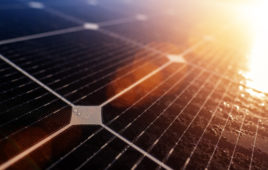Unlocking the potential of renewable energy sources is not only crucial for a sustainable future but also an opportunity to address social inequalities. In an inspiring move towards this goal, more than half of the output at a community solar array in New Jersey will be allocated to low-income subscribers. This groundbreaking initiative aims to provide affordable access to clean energy and empower marginalized communities.
Promoting Energy Equity through Community Solar
The allocation of over 50% of the solar array’s output to low-income subscribers marks a significant step forward in promoting energy equity. By ensuring that those who are economically disadvantaged have access to renewable energy, this initiative tackles both environmental and social challenges simultaneously. It recognizes that everyone should have equal opportunities when it comes to accessing clean power sources.
This innovative approach allows individuals who may not have suitable rooftops or financial means for installing their own solar panels to benefit from renewable energy generation. By subscribing, low-income households can reduce their electricity bills while contributing positively towards reducing carbon emissions and combating climate change.
Moreover, this community solar model fosters collaboration among residents, local businesses, and utility companies. It encourages collective action by pooling resources together for the greater good. The shared responsibility creates a sense of ownership within these communities as they actively participate in shaping their sustainable future.
A Catalyst for Economic Empowerment
Beyond its environmental impact, allocating such a substantial portion of the community solar array’s output specifically for low-income subscribers has far-reaching economic benefits as well. Accessible clean energy reduces household expenses on electricity bills, freeing up funds that can be redirected towards other essential needs like education or healthcare.
This initiative also opens doors for job creation within these communities by fostering growth in the renewable energy sector. As the demand for community solar projects increases, there will be a need for skilled workers to install and maintain these systems. This presents an opportunity for job training programs that can empower individuals with new skills and create employment opportunities.
Furthermore, by investing in renewable energy infrastructure within low-income neighborhoods, this initiative helps revitalize communities that have historically been marginalized or underserved. It promotes economic development and attracts investments while improving the overall quality of life for residents.
A Brighter Future: Conclusion
The allocation of more than half of the output at New Jersey’s community solar array to low-income subscribers is a remarkable step towards creating a more inclusive and sustainable society. By providing affordable access to clean energy, this initiative empowers marginalized communities, reduces carbon emissions, and fosters economic growth.
This groundbreaking approach not only addresses environmental challenges but also tackles social inequalities head-on. It demonstrates how renewable energy can serve as a catalyst for positive change by promoting equity, collaboration, and economic empowerment.


